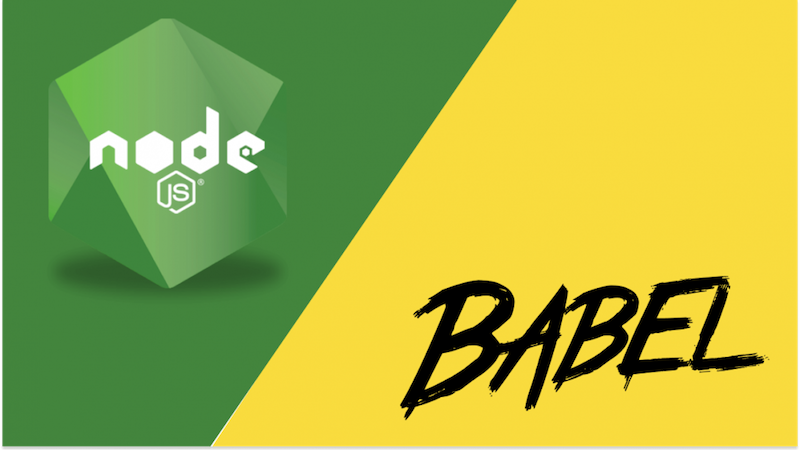How to Use ES7 Import/Export, Async/Await in Node.js?
Javascript ES7 syntax allow you use keywords such as import/export, async/await, which improve ES5, ES6 syntax. But in Node.js is not supported for ES7 syntax. In this tutorial, I’ll introduce you babel.js to use ES7 syntax.

Introduction
In ES5 syntax, we usually use callback, but make callback hell, such as:
function timer(cb) {
setTimeout(() => {
console.log(1);
setTimeout(() => {
console.log(2);
setTimeout(() => {
console.log(3);
setTimeout(() => {
console.log(4);
cb();
}, 100)
}, 100);
}, 100);
}, 100);
}
timer(() => console.log('Finish'));
Output will be:
1
2
3
4
Finish
We can use Promise to prevent callback hell such as:
const timeout = (time) => new Promise((resolve) =>
setTimeout(() => resolve(), time))
function timer(cb) {
timeout(100)
.then(() => {
console.log(1);
return timeout(100);
})
.then(() => {
console.log(2);
return timeout(100);
})
.then(() => {
console.log(3);
return timeout(100);
})
.then(() => {
console.log(4);
cb();
})
.catch(err => console.log(err))
}
timer(() => console.log('Finish'));
The output is similar as above example. But Async/Await will be better than Promise in this example.
Babel
Babel - a compiler for writing next generation JavaScript

Babel will allow you use Async/Await and Import/Export in ES7 syntax in Node.js
How to use Babel in Node.js?
Firstly, we’ll create simple node.js project
Create Node.js project
- Create directory
node-babelbymkdir node-babel - Create npm project by
npm init - Create file
index.jsbytouch index.js - Add start script in
package.jsonby line"start": "node index"
Install Babel dependency
# add babel core
yarn add babel-polyfill babel-register
# or use npm
npm install babel-polyfill babel-register --save
# add es5, es7 syntax
yarn add babel-preset-es2015 babel-preset-es2017
# or use npm
npm install babel-preset-es2015 babel-preset-es2017 --save
# create file .babelrc
touch .babelrc
# create file timeout.js server.js
touch timeout.js server.js
File package.json will be:
{
"name": "@sam/node-babel",
"version": "1.0.0",
"description": "",
"main": "index.js",
"scripts": {
"start": "node index",
"test": "echo \"Error: no test specified\" && exit 1"
},
"author": "",
"license": "ISC",
"dependencies": {
"babel-polyfill": "^6.26.0",
"babel-preset-es2015": "^6.24.1",
"babel-preset-es2017": "^6.24.1",
"babel-register": "^6.26.0"
}
}
Usage with Babel
File .babelrc add:
{
"presets": ["es2015", "es2017"]
}
File index.js add:
/**
* Babel ES6, ES7 to ES5
*/
require('babel-register');
require('babel-polyfill');
/**
* Run server with syntax ES6, ES7
*/
require('./server');
File timeout.js will export function timeout:
export const timeout = (time) => new Promise((resolve) =>
setTimeout(() => resolve(), time))
File server.js will import from timeout.js and use async/await:
import { timeout } from './timeout';
async function timer(cb) {
await timeout(100);
console.log(1);
await timeout(100);
console.log(2);
await timeout(100);
console.log(3);
await timeout(100);
console.log(4);
cb();
}
timer(() => console.log('Finish'));
Run by yarn start or npm start. Now you can use import/export and async/await in node.js with babel.js
Conclusion
I have shown you how to use ES7 syntax with async/await and import/export in Node.js application with babel.
Thanks for reading my article! If you have any feedback or criticism, feel free to leave any comment!

